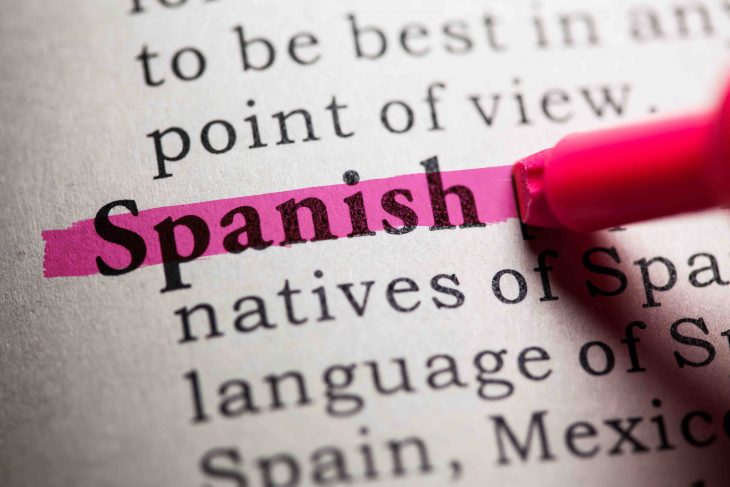
The Spanish language is a melodious sound with a rich cultural heritage. As of today, millions of people around the world still speak this language. From its intriguing history to its unique linguistic features, here are 17 fascinating facts about the Spanish language that will pique your curiosity.
Spanish is the second most spoken language worldwide.
Spanish is the second most spoken language in the world by the number of native speakers, trailing only behind Mandarin Chinese. It’s the official language in 21 countries, with over 460 million people globally speaking it as their first language.
Spanish is a Romance language.
Like Italian, French, Romanian, and Portuguese, Spanish is a Romance language. It originated in the Castile region of Spain, hence its other name – Castilian (Castellano).
Not just romance, but also a phonetic language.
Spanish is a phonetic language. This means words are pronounced as they are written, making it relatively easy to learn compared to English.

There are many ways to apologize in Spanish.
There are about five different ways to say sorry in Spanish. The most common is “Lo Siento” and the most common way is “Que tonto soy”.
The longest Spanish word is a mouthful.
The longest Spanish word is esternocleidomastoideitis (inflammation of the sternocleidomastoid muscle), with 30 letters. It’s a mouthful even for native speakers!
Spanish counts in millions.
Another interesting fact about Spanish is that it has a unique number system. Instead of using the “thousand million” terminology, Spanish speakers use the word “mil millones,” which translates to “one thousand million” in English.
The language is rich with proverbs.
Spanish is rich in proverbs (refranes). One popular proverb is “No hay mal que por bien no venga,” which translates to “every cloud has a silver lining”, emphasizing the positive outlook of Spanish-speaking cultures.
¡Olé!
The exclamation “olé” often associated with flamenco and bullfighting, originates from the Spanish language. It is an expression of admiration or excitement, typically used during festive events.

It has Arabic influences.
Arabic greatly influenced Spanish. From the 8th to the 15th century, much of Spain was under Moorish control, and nearly 4,000 Spanish words have Arabic roots. Examples include azúcar (sugar), naranja (orange), and arroz (rice).
Spanish also has Native American influences.
It is possible to think of the Spanish language a bit like a sponge since it has many influences. Spanish has words borrowed from Native American languages, especially names of foods like tomate (tomato) and chocolate, and animals like coyote.
The Royal Spanish Academy standardized the language.
The Real Academia Española (Royal Spanish Academy or RAE) standardizes the Spanish language. It was established in 1713 and operates under the motto “It cleans, fixes, and gives splendor”.
Here’s another fun fact: The Royal Spanish Academy’s dictionary contains around 93,000 words, though there are many more unofficial words used in different Spanish-speaking regions.
There are gendered nouns.
Like the German language, Spanish also has masculine and feminine nouns. And, the adjectives must match the gender of the noun they describe. This feature is common in Romance languages.
The only language with puzzling use of exclamations and questions.
Spanish is the only language to use the inverted question and exclamation marks (¿ ? and ¡ !). These make it easy to see where a question or exclamation begins and ends in a sentence. Indeed, to non-native speakers, it is rather puzzling to see such inversions. Nonetheless, it adds beauty to the language as well.
Siesta time also means nap time.
The Spanish culture embraces the concept of a midday nap called “siesta.” This tradition reflects the importance of relaxation and taking a break from the bustling routine.
The Spanish Alphabet has 27 letters.
It’s the same as the English alphabet, with the addition of one extra letter: the “ñ”.

There are many variations of Spanish.
Similar to English, Spanish has many dialects. Latin American Spanish is different from European Spanish, and there are also variations within each region. For instance, Argentine Spanish is known for its distinct pronunciation and use of “vos” instead of “tú” for the second-person singular pronoun.
There is also a rich reservoir of Spanish Literature.
Spanish literature also boasts one of the most celebrated works in world literature, “Don Quixote,” written by Miguel de Cervantes in the early 17th century. Don Quixote is also one of the most performed ballet works worldwide.
Spanish is an official language in a part of Africa.
Spanish is the official language in Equatorial Guinea, Africa. As of today, it is still the only country in the world that recognizes Spanish as the official language.
Final Word
Spanish is more than a language; it’s a window to rich cultures, histories, and peoples. From its origins in the Castile region of Spain to its global spread across continents, Spanish continues to grow and evolve. Learning Spanish not only equips you with a new means of communication but also opens up a world of music, literature, and traditions.
So, whether you’re a seasoned Spanish speaker or just starting on your linguistic journey, remember: El mundo es un pañuelo – the world is a handkerchief, a Spanish saying that highlights our interconnectedness and the fascinating tapestry of human culture.
Was this page helpful?
Our commitment to delivering trustworthy and engaging content is at the heart of what we do. Each fact on our site is contributed by real users like you, bringing a wealth of diverse insights and information. To ensure the highest standards of accuracy and reliability, our dedicated editors meticulously review each submission. This process guarantees that the facts we share are not only fascinating but also credible. Trust in our commitment to quality and authenticity as you explore and learn with us.


